
121
Episode 121 37 mins
A Compass Is Better Than a Roadmap: Becoming a Manager of Managers
John Gleeson, Vice President of Customer Success at Motive

00:00
00:00


Anybody who's become a manager has done something really well. They're probably a self starter, they probably have a pretty good skill set to start with. And they're probably pretty aspirational. So you have to really make sure that you're adjusting to that. This person probably has an opinion on how things should be done and they want to make sure that they're directing the organization, or they're part of the organization in a way that they can use that full opinion in their skill set.
In this episode
When an organization is experiencing hypergrowth, it can be difficult to remain aligned.
That’s why having a north star is crucial in guiding the team in the right direction.
John Gleeson is the Vice President of Customer Success at Motive (formerly KeepTruckin). John joined Motive when there was only 50 employees. Today, there are over 3,000 people.
In episode #121, John shared his insights on leveraging data to ask better questions, his philosophy of understanding the why behind decisions, and the importance of building context org-wide.
Tune in to hear all about John’s leadership journey and the lessons learned along the way!
Like this episode? Be sure to leave a ⭐️⭐️⭐️⭐️⭐️ review and share the podcast with your colleagues.
02:39
The fear of being a micromanager
08:05
Growing into the role of VP
14:00
Norm of documentation
15:40
Weekly business review
18:21
Asking better questions
24:43
A compass is better than a roadmap
26:11
Navigating timezone by showing gratitude
29:42
Ask me anything
32:33
Managing in a new environment
36:07
Stay curious
Resources
Transcript
Aydin Mirzaee (Fellow.app) 00:33
John, welcome to the show.
John Gleeson (Motive) 03:13
Yeah, it’s good to see you. grateful to be here.
Aydin Mirzaee (Fellow.app) 03:15
Yeah, I’m very excited to do this. You and I have known each other for quite a while now. And you’ve always been very, very supportive. And it’s been really cool to watch you your career from the sidelines and all the progress that you’ve made. And especially all the growth that we’ve seen that motive and so nice to have you on this podcast. This is really cool. I have so many questions. Today, you are the VP of Customer Success at Motive. You started as the Head of Customer Success and continue to grow. There’s a lot of people that work at motive order of magnitude how many people work there?
John Gleeson (Motive) 03:51
Yeah, we’re about 3000 people.
Aydin Mirzaee (Fellow.app) 03:54
Okay, that’s a lot.
John Gleeson (Motive) 03:55
Yeah, a lot of people now. But it wasn’t always that way. When I started. I want to say there was about 50 people.
Aydin Mirzaee (Fellow.app) 04:01
Wow, you started when there was only 50. That’s so early. And you were early. I didn’t know you were that early. You’ve seen quite the journey.
John Gleeson (Motive) 04:09
I have seen this business from Yeah, about a million dollars in ARR. Through to close to 300 million. It’s been quite the story. So all of the funding rounds, all the headcount growth, all the AR growth. It’s been a trip for sure.
Aydin Mirzaee (Fellow.app) 04:26
Wow. Wow. So let’s start from the very beginning. Now, I don’t know if this was at Motive or not, or if it was at another company. But do you remember when you first got into a leadership position or management position? Let’s talk about some of those early mistakes. You remember some of the early mistakes that you used to make?
John Gleeson (Motive) 04:44
Oh, man, yeah, a ton of mistakes. But I guess like earliest memory of like really leading a team actually was even before I got into like the startup world, the venture backed tech startup scene was actually in our hometown, right we share a similar one downtown Ottawa. I had a hockey school in Ottawa and it took off and I started to hire a bunch of people. And I think probably like the first mistake, as they think back on it, is they’re such like this. You know, when you go from running something yourself to managing people for the first time, nobody likes to be micromanaged. Right? That’s like the worst tagline ever. Oh, that person is a micromanager. And I think like my default was to be like, so hands off, because I never wanted to be labeled as a micromanager. And just a lot of things fell apart when you almost like release the reins too quickly for fear of micromanaging. And there was probably times I’m like, I bit my tongue because I was afraid to get like labeled in that way, when there was actually real opportunity for coaching and improvement and to guide somebody through this and maybe like what I’ve come to appreciate from like that early experiences. Yeah, certainly people don’t want to be micromanage. But most people also crave direction, as well, and guidance. And if you do have something to share, framed in the right way, they certainly want to hear it. So from an early stage of my career, even the career that I’m in now, have always kept that with me.
Aydin Mirzaee (Fellow.app) 06:18
Yeah, maybe we can go into some detail there. Do you remember what series of events led you to realize that one way was better than the other? Was it you just read a book or something and changed everything overnight? Or did this take some time? How did you come upon that realization?
John Gleeson (Motive) 06:36
Yeah, so I probably like to push the limits of what’s possible. So I had this business, I had managers working for me running the day to days. And I don’t know, you know, that one of my side hobbies, that thing outside of building companies I’m most passionate about is surfing. So I said, Hey, this thing works. Without me. Let’s go on around the world surf trip. So I spent a year serving around the world managing this whole thing remotely. And I think the lack of direction when you’re not around was like a rude awakening to like, oh, okay, like, maybe it’s time to put some policies in place, maybe it’s time to think about how you train people, maybe it’s time to like, add some documentation into the fold. And you have to figure that out really quickly when you are on an island in remote Indonesia, with Wi Fi, one hour a day. So that was like that was a rude awakening was like, whoa, okay, this thing is funding this kind of interesting trip that I’m on, I better figure out how to make sure that people on the front lines are successful, and they have the management support that they need, even if you are halfway around the world.
Aydin Mirzaee (Fellow.app) 07:44
Yeah, I always find this. And I always use this term, just the pendulum of management, usually you swing one way or the other based on previous life experiences, previous managers you’ve had, and then it’s always maybe you swing the other way. And then eventually you find a balance. And then you figure out actually, there’s a certain threshold or a certain place, the pendulum should be for each and every different person. And of course, like the roles matter to in the mix.
John Gleeson (Motive) 08:10
Oh, my God. Yeah, I couldn’t agree more like, you know, I spent a lot of time talking to different founders and hanging out with different founders. And you’ll always see like, the quirks of an organization almost manifests themselves, either off of like an extreme weakness of that founder or like a, an extreme strength. And you totally see that pendulum swinging in the organization. Based off Oh, yeah, whatever that weighting is plus or minus in either direction.
Aydin Mirzaee (Fellow.app) 08:36
It’s interesting. So what I wanted to now chat about is, again, your role at motive. And so you started as the Head of Customer Success. And this is a thing that, you know, startups do, right. So in the beginning, someone is head of a function, and he might not necessarily have, you know, standard titles, and and as the company grew, he became a senior director, and now a VP. I guess one of the questions that I would maybe start with is, what was that transition? Like for you to transition from one title to another and how your responsibilities changed? How would you describe the differences?
John Gleeson (Motive) 09:13
Yeah, and maybe even like, going before that head of title when I learned about mobile AI, and it was called keep trucking at the time. I was like, Man, this is the company that I want to work for, if what they’re saying is true. And all of this comes true. This machine is going to be an absolute rocket ship and firm believer that like all boats rise with a rising tide. So I actually didn’t even come in being the head of all of customer success. They already had a Head of Customer Success in place. And I said, Hey, look, I don’t quite know where I fit in. My previous role was running all of customer success, but like, give me a chance to run and I’ll do it. So I actually just initially started managing the Enterprise team and And I wouldn’t say my progression happened rather quickly, in some ways, because there was so much to do. And I just kept saying, yes. So within a couple of months, it was managing the mid market team, which was starting to grow. Then in a couple months, we had this like, budding commercial team, because there’s more customers coming on. So naturally, Hey, you took on midmarket, you want to take on the commercial segment? Okay, sure. And then eventually, they were like, hey, like, do you just want to oversee the whole whole thing. So I think like, the whole process overall, though, is just for me, like trying to learn as fast as I could about my own business, trying to do the best job I could do there. And then just always be willing to take on extra challenges. But definitely like trying to, like learn ahead of the curve to, you know, leaning into different people in my network or reading different books trying to get like two steps ahead of Okay. In the event that they were to say, hey, like, do you want to unpack this, you want to take on this part of the function? Like, what would I need to be successful there? So I don’t know if that answered your question. But that was the story. And it escalated rather quickly. And it was probably just a product of saying yes to a lot of things.
Aydin Mirzaee (Fellow.app) 11:18
Yeah, I think the attitude matters a lot. Being willing and excited about taking on more and more responsibility. One of the things that I guess starts to happen during those phases is you maybe go from being a manager to now a manager of managers, what would you say? Were the differences? What did you have to do differently? And what did you learn about managing managers?
John Gleeson (Motive) 11:42
I would say, like, first and foremost, like when you start to manage managers, you know, anybody who’s become a manager has done something really well, to that point in time, they’re probably a self starter, they probably got a pretty good skill set to start with. And they’re probably pretty aspirational, right. So you have to like, really make sure that you’re adjusting to that this person probably has an opinion on how things should be done and on, they want to make sure that they’re directing the organization, or they’re part of the organization in a way that they can use that that full opinion in their skill set. And I think that’s great, you really have to become a good listener, as a manager of managers understand what their mental models look like, incorporate that into your plan. But then also, the real knack is making sure that your vision and how the vision for your part of the company and how it fits into the broader company starts to shine through them. And sorry, I’d say like, the real skill set, yeah, it’s like number one, listening. Number two, being a super clear communicator, setting a clear vision, and then right through to like, the tactics on how and the documentation as to like how that’s going to pass through. And so I think, you know, and you like, see really good manager manager relationships, there’s certainly incongruency, to how everybody does things, there’s a set of norms that everybody subscribes to. But then there’s also an opportunity for each of those managers to bring their own strengths. And that’s how you kind of create something that has a little bit more resiliency to it as well, because, like I said, the profile of that manager is different than maybe somebody completely on the front lines. They want to make sure that they’re bringing everything that they have anyone in capital that
Aydin Mirzaee (Fellow.app) 13:32
Yeah, I mean, this is the thing that typically happens, you do really well at your role, you excel, and then you get this change of role, not a promotion, change of role that is being a manager. And what’s interesting about one of the things that you said was, you had to make sure that we all had similar norms, or the same norms across the different teams. And maybe part of the way that you achieve that is by you know, having a vision, great documentation. But just to get into the nitty gritty, what is an example of a norm, for example that you want to have across the teams that report into you.
John Gleeson (Motive) 14:08
We certainly strive to be as data driven as we possibly can. So everybody knows that we should be tracking different metrics. And we should know where this fits in the order of things. As far as metrics go, Is this a lagging indicator? Is this a leading indicator? But certainly, like a norm, we really try to drive home is like the why behind things. So whenever, you know, we’re in different meetings, people know that they’re, they’re going to be asked, Why is this moving? And so we’ve kind of set that norm in a in a couple of different ways. Number one, like how we conduct ourselves in meetings, right? That’s always going to be a question that’s asked. Number two, is because it’s going to be asked because there’s expected to be fall off when maybe you you don’t know and that’s okay. That culture just starts to build so I think it’s like how you tell Like about things, it’s how you document after the fact and what the follow up looks like. And then even like how you structure your meetings, as well, there’s certain common metrics that we’re gonna go back to again and again and again. And so it starts to form that habit of the norm that we expected.
Aydin Mirzaee (Fellow.app) 15:18
That’s very interesting. So one is that, culturally speaking, asking about the y is just a way to do things. So you almost know that walking into a group setting or working with other people that if a number is moving in a certain direction, people are gonna have to people will ask why. So it’s knowing that that will happen and being prepped for it. And it sounds like even from a structural perspective, like processes that you run, or maybe meetings that you run, a lot of those are similar or have a similar structure in place as well, is it maybe like a retrospective meeting or a decision making meeting or something that you make sure that is the same across your organization, or people use the same format?
John Gleeson (Motive) 16:02
Yeah, so we actually spend a lot of time each week. And I don’t know if it’s too much time, but I think it’s the right amount of time. But every single week, we actually have what we call a weekly business review. And so on my team, we have an SMB team, we have a commercial team and mid market team in an enterprise team. So there’s four weekly business reviews every week, the basically, the template for these weekly business reviews is pretty structured, and that we have the big metrics that we’re always tracking. And then we have the leading indicators that go into those big metrics. So a lagging or how we’re doing is just, let’s say, our renewal rate, then within that are certain churn reasons or certain reason codes spiking. So that kind of informs the why. And then if something is way off, we basically queue in to do a little bit more of a deep dive. And so week over week over week, everybody knows that on Thursday or Friday, they’ve got to do this weekly business review. So everybody’s gathering information on the what, and the why all week. And then going into next week, we have this cadence of okay, here’s the things that we need to figure out this week. Here’s our next steps. Here’s our action plan. And so those big meetings that we’re driving towards each week, really kind of drive norm around metrics around management, and around just like one foot in front of the other week over week, here’s what we’re going to keep the same, here’s what we’re going to change in order to ensure that we’re always tracking towards the big things that matter.
Aydin Mirzaee (Fellow.app) 17:37
Yeah, and I think that puts into really good perspective, this, this notion of being a manager of managers, it’s also about operating the same way. So if this meeting, for example, it’s a weekly Business Review, you know that if you’re a part of Team A or Team B, maybe the content of the review is going to be a little bit different, but it follows the same structure. So there’s almost like there’s a way of being there’s a process. And there’s a cultural norm around it. It’s all about the why the numbers are moving. And that’s just part of their and I guess, like the sense that I’m getting is, as a manager of managers, it’s almost like you’re making sure that there is a constant operating system across the teams that basically report into your organization. Now, without a doubt, without a doubt, since we are talking about data, it’s clear through some of the conversation we’re having right now. But you care a lot about data. And you also believe that new managers specifically have to have a focus on this. And part of the way that they can do that is Drew asking better questions. Maybe you can talk a little bit about what that means to ask better questions. What’s a good question? What’s not a good question and how people should think about it? Well, I
John Gleeson (Motive) 18:47
think sometimes, too, like when you talk about data, everybody assumes that you’re talking about some Tableau dashboard, or some sort of product usage dashboard. And that’s really important. But I think like data comes in all sorts of different forms. And there’s certainly like quantitative data. But then the qualitative data is also important as well. And so you want to make sure that you’re informing yourself with that good qualitative data, as well. And so I always like to start with the quantitative data to guide my questions when I get into like a weekly business review or a one on one, hey, you know, was interested to see that our conversion rate on this metric has dropped or, you know, I noticed this number of tickets has increased something like that, right? So you start with like, the number. And then you always ask, like, what’s your hypothesis on this? Why do you think this is happening? And sometimes people will give you like a really good answer. And so the follow up question that I always like to ask is like, why do you believe that? How do you know that’s true? Or if that wasn’t the case, or that wasn’t, you know, and that turned out not to be the right hypothesis. What else could it Be. And so then you start to like actually understand like how they’re thinking about the problem. And you start to get some like education from them to about, hey, maybe there’s different ways that you should be thinking about this. What are ways that we can come together to find a better solution? Or what are some, you know, areas that we can shine our flashlight together on? So I always like to like, push people a little bit to show their math. And I want to see like, what process is going into that talk? Because it’s sometimes like, in seeing their math, it helps. Yeah, come to just like a better understanding of the problem overall, and figure out, you know, what you’re missing? And what solution can be?
Aydin Mirzaee (Fellow.app) 20:38
Yes. So number is moving. You ask, what’s your hypothesis? Why do you think this is happening? And so say they say something, either it’s a good answer, or bad answer. You don’t go out and say, No, I don’t think that’s the reason. Or I think the reason is this other thing. So it’s very interesting, you just jump into how did you come up with that rationale? Or how do you think about the problem? And this answer they get is like, if you ask questions like that, it just opens up the conversation into a deeper level that will maybe allow you to see things that you weren’t seeing before. And I guess a part of it is you’re getting into this coaching mode to understand how they are operating versus like, getting to binary answer in one direction or another.
John Gleeson (Motive) 21:21
Yeah, without a doubt, and I feel like, you know, just the growth that we’ve experienced, even in our business, like default, has always, I’ve always felt like, there’s so much I don’t know, I don’t even know what I don’t know. And in some cases, not even sure, like how I should think about things. So I’ve always come to all of these conversations with a real open mind. And you know, what I’m asking the why. And coach me on this type questions. It’s pretty genuine. Because there’s just so much to be learning at any given time. Yeah,
Aydin Mirzaee (Fellow.app) 21:52
it’s definitely true at your scale, and like how much is going on with organizations? There’s also the person I guess, who’s looking at this or bringing the problem, they’ve probably spent more time than the manager thinking about it, right? So whereas like, it might be a hey, I’ve been thinking, the manager has been maybe thinking about this for all of five minutes, but someone else has maybe spent hours or days or weeks on it. And so why not start from that point of versus coming up with an answer from scratch? When you do something like this? It’s because you also mentioned that, yes, of course, there’s a lot of data, but you’re also trying to get well informed from a qualitative perspective, what are some things that maybe you’re looking to see? And I wonder if there’s an example or a story around how this line of questioning maybe allowed you to see something that wasn’t obvious in the beginning?
John Gleeson (Motive) 22:42
Well, there is a lot of things in our business, maybe that weren’t obvious to me, at first, like I’m in a customer success role, right? My customers are people in the trucking industry, I didn’t come from the trucking industry. And as such, my previous business, it was selling software to people in software jobs, right. So there are certain things that I learned that were different in this industry, and like how you had to, like, meet the customer in a different place based off like the reality of what’s happening in their industry or in their world. And so coming with that, hey, how do you think about this? What are you hearing, maybe like replay back to me, like what that conversation with the customer sounded like, you start to like, inform just some blind spots overall, where it’s like, hey, yeah, that’s might be standard practice in the business that you came from. But in this industry, it’s just not gonna work. And so you start to surround really those qualitative stories that those anecdotal stories start to shape your opinion sending in the world.
Aydin Mirzaee (Fellow.app) 23:44
Okay, they’re just a quick note, before we move on to the next part, if you’re listening to this podcast, you’re probably already doing one on one meetings. But here’s the thing, we all know that one on one meetings are the most powerful, but at the same time, the most misunderstood concept in practice and management. That’s why we’ve spent over a year compiling the best information, the best expert advice into this beautifully designed 90 Plus page ebook. Now, don’t worry, it’s not single spaced font, you know, lots of tax. There’s a lot of pictures. It’s nice, easily consumable information. We spent so much time building it. And the great news is that it’s completely free. So head on over to Fellow.app slash blog to download the Definitive Guide on one on ones. It’s there for you. We hope you enjoy it, and let us know what you think. And with that said, let’s go back to the interview. What I also really like about what you’re saying is that if you can dig that layer deeper, it sounds like if you’re curious for a little bit longer and go deeper and to the extent that you’re coaching in this situation, if you can coach on reasoning, that’s a lot more powerful than just coaching on you know, The answer to a question, right? And so that’s when you can make change or help form change that will be relevant to other problems and other solving solutions in the future.
John Gleeson (Motive) 25:12
Yeah, without a doubt, actually, you know, one of the things that we had on an early slide deck, when we were growing quickly, was that a compass was better than a roadmap, right? Because we were building so fast the map would constantly be changing. And as such, like the roads would be different, right? You can make a wrong turn if it was simply turn left, turn right, turn left turn, right. And so really like setting what a Northstar was, and then also like, Okay, here’s my mental map of the world, let me inform you what I think it looks like really empowered people so that when the map and change, they still could find their way home, they still knew. And because of how you asked your questions, because of the two way dialogue that existed, they started to know yet what the mental model of the world look like, and they can still navigate accordingly, even if everything was changing in the map no longer work.
Aydin Mirzaee (Fellow.app) 26:05
Yeah, I love that the compass is better than a roadmap. I like that a lot. So one of the things, it’s also interesting about your role as again, big company, but you’ve always had people in different time zones for the audience. I mean, you and I were chatting about this earlier, but you live in Hawaii, but you have people all across the world that report into the organization. I wonder how that has shaped your organization in the way that you just work? How do you make all of that work with so many different people in different time zones?
John Gleeson (Motive) 26:38
You know, I’d say it’s like probably something that we’ve taken for granted in some ways, our main teams, we have a large team overseas in Pakistan, we’ve always had a big presence in San Francisco, we now have people on the East Coast. And we’ve always had a presence in Nashville. Largely we’ve oriented, you know, I’m in a customer facing team, our customers are in the States and in Canada. So we’ve oriented around there, our customers timezone. So first and foremost, there’s just like, even though people are in different time zones, there’s an expectation that, you know, the hours, the main hours that your customers are there, the mean hours that you’re there, as well, you know, I can’t profess to say that we’ve got that 24 hour a day, handoff process dialed where people are working around the clock and their time zones, and shipping work accordingly. Like, that’s not what it’s like for us, for us. Our trucking industry has its hours, and those are the hours that were there. And so our team particular in Pakistan, like they would do work overnight, every day, so that they can work with the customers in North America, our folks on the West Coast sometimes shift their days so that they can accommodate East Coast people, me being a middle of the Pacific Ocean, my day starts very, very early. I’m there for customers when customers want to be there. So sometimes that’s you know, four in the morning for me, and that’s okay. Because you have people working in awkward hours of the day, you have to be just like overall, like very appreciative for that. And there has to be like a certain level of, of empathy that comes with that, in particular, for our folks over in Pakistan. You know, it is grueling to work overnight, every single day. And so one of the things that I think has made this successful is just showing a certain level of gratitude, letting people know that their work is appreciated, making sure that you know, when there are different holidays in their country, that you’re appreciating that and you accommodate accordingly. So just like acknowledging the fact that what people are doing is difficult, and showing gratitude for it, I think has actually probably been the key to navigating all of these timezones for us. The other thing too, is like, there’s certain like norms that have been with us from day one. So even before this post COVID world where everybody was remote, we always had a team that, you know, many of us had never met in person, whether it was Nashville and San Francisco, San Francisco, and Pakistan. And so there was always like a strong emphasis on extra meeting time to just get to know people to share cultural experiences. I’ve always held like an Ask Me Anything session once a week where it’s like very informal, I don’t come up with a plan slide deck or anything like that. It’s Hey, you know, you saw this, or you observe this, asked me the why behind and I’m more than happy to share anything and everything that I can share. So again, just like having space to build community, they’ll be safe spaces, I think has been really important to us.
Aydin Mirzaee (Fellow.app) 29:42
John D asked me anything that’s really interesting. So I assume this is something you still do today. Did you find in the beginning that maybe people were more shy to ask questions, how did you kick off something like this to make it very effective? And I’m also curious, do a lot of people come to the So people come when they have questions. It’s a really interesting concept for a leader. And so for anyone thinking about oh, that’s an interesting idea to do and ask me anything. But wonder if you could maybe give us some hacks and some things that you’ve learned?
John Gleeson (Motive) 30:14
Yeah. So a couple of things like number one, I love to use fellow for this. So what I’ll do is I’ll actually see the meeting. So I don’t come with a deck. But I’ll save the meeting with things that are top of mind to me that aren’t coming out in other forums. So like, insights from the board meeting or insights into like something that I learned in in a meeting with us. So it’s like, the things that I see the meeting with are not everyday facts. They’re not formal company announcements, it’s really like, Hey, let me lift the hood on the engine. Let me share with you kind of the why behind some different things. And so in sharing that, why I kind of come with a little bit of, okay, look, I’m truly being at that as open book as I possibly can be on this. And so that creates a two way exchange type environment, like I’m really opening up with you, you know, maybe I’m sharing like, hey, like, personally, here’s something that I’m like really struggling with right now. Like when I did this meeting, I didn’t do very good. It’s been top of mind all week. And that, that kind of lets people come with more open answers. So we like like, the key to it is like, structure, that meeting has to have a little bit of vulnerability to it. Because it’s really, really tricky. For somebody to Yeah, like, ask a hard question in front of their peers.
Aydin Mirzaee (Fellow.app) 31:38
Yeah, I like the idea of seeding it in advance, I think that’s clever to get the conversation going. And what I’m noticing in as a theme in basically, a lot of the things that we’re talking about is just this notion of why. And what I really liked about it is and I don’t know if you’re doing this intentionally, but it sounds like even for the Ask me any things. You start with the why. And so when you’re talking with others, and they present data, and you go back to the why and train, it seems like everything goes back down to that so you can understand the intentionality how people arrive at things. And I can see how that ends up becoming a cultural norm because it’s in everything that you do.
John Gleeson (Motive) 32:19
Yeah, yeah, people definitely like they get behind things. When people understand like the why we’re doing this, it’s a lot easier to get buy in. Right. And so you create that why? In a lot of different ways.
Aydin Mirzaee (Fellow.app) 32:32
Yeah. So the thing that I did want to ask you about as we’re getting close to time here is you’ve also had the opportunity to see various cycles in business. And I think one of the things that everybody’s kind of looking at these days is what’s going on in the world? Which direction is the economy going and all of a sudden, it is maybe a different season? And so I’m curious about your thoughts on how maybe you’re changing the way you’re doing things and how you would advise other people to look around, see what’s going on, and maybe act differently in this environment?
John Gleeson (Motive) 33:07
Yeah, totally. This has been new for me, most of my career has been in growth at all costs kind of environment, right? Or there’s deep pools of venture capital money and getting funding for your ideas internally is relatively easy, right? You know, if it can drive more growth, it can get funded. And those assets are a little bit easier. Right now, we’re in a different world where growth is certainly important. But that path to profitability, the margins are really important. Probably just going back to like, the whole theme of the conversation. One of the things that’s helped is, yeah, it’s been a big change from the kind of catered lunches, maybe like slightly cushier environment of the past to the, hey, things are a little bit more frugal this year. I think like people, by and large, are okay with that. So long as they know, like, the why behind. And so I’ve been like, very forthcoming in, hey, like, here’s the direction coming from the board, based off of different conversations that they’re having in their portfolio. They know this, there’s some credibility to what they’re saying there. And as such, what’s important to us is a little bit different now. So again, just like starting with a, here’s what it was before. Here’s why it was what it was before. This is what we were optimizing for was 70% year over year growth. This year, rosy the game of change, here’s the Y. So I’ve even spent like a lot of time just like unpacking and trying to stitch together things that like are in the news in the macro, and then pulling that directly into our business. So even an example of that it’s been trying to like really inform the team on the reality of our customers. Right. We talked before we got on this podcast that last year was a really good year for our customers is $2.50 and fuel prices and the rate They can move stuff for were really good. So they, they were having a good year, this year, everything changed. And so stitching through those things that you see in the news back to the reality of our customer, back to the reality of the asset I’m starting to make of the team, Hey, how can we stretch this resource? Or how can we get more creative and doing more with less, so just like your environment, but it’s a little bit like kids before you go to the doctor’s office, like just say, hey, look, here, we’re going to the doctor’s office, they’re probably going to look at your ears, it’s going to be okay, they’re going to use an instrument that looks like this, then that kind of, again, calms down the whole situation, and lets people can see around the corner. So it’s not quite a surprise, because they know what’s going to happen and, and why that’s happening.
Aydin Mirzaee (Fellow.app) 35:48
Yeah, and why you’re going to the doctor, and this is the outcome. And yeah, I like this. I think there’s this nice theme throughout this whole conversation of even when there’s change coming, that isn’t changed, that you’ve necessarily started. But if everybody can get behind the why on why the change is happening, they can be bought in. John, this has been an incredible conversation, we’ve talked about a wide variety of things, including how to be a manager of managers how to manage in a distributed team in different time zones, and of course, managing through different seasons of business. The last question we’d like to ask everybody is for all the managers and leaders constantly looking to get better at their craft. Are there any final tips, tricks or words of wisdom that you would leave them with?
John Gleeson (Motive) 36:33
My parting advice would be, be curious, keep asking the wise, just as you think you you know, something, it’s probably time to reassess? Do I really know that? Keep asking the wise. And yeah, inform yourself with both qualitative and quantitative data, because both are, are really important. And both can inform the why you should do something or not.
Aydin Mirzaee (Fellow.app) 36:58
That’s great advice, and a great place to end it. John, thanks so much for doing this.
John Gleeson (Motive) 37:02
Awesome. Cool. Well, thank you very much. I really appreciate your time.
Aydin Mirzaee (Fellow.app) 37:06
And that’s it for today. Thank you so much for tuning into this episode of the Supermanagers podcast. You can find the show notes and transcript at WWW dot Fellow.app slash Supermanagers. If you liked the content, be sure to rate review and subscribe so you can get notified when we post the next episode. And please tell your friends and fellow managers about it. It’d be awesome if you can help us spread the word about the show. See you next time.
Latest episodes
-

Joe Militello, Chief People Officer at Pagerduty: Why You Need to Rethink Your People Strategy
Episode 188
Joe Militello
-

Creating Cohesion: The Art of Connecting the Dots in Team Dynamics
Episode 181
Tonille Miller
-

Diagnosing Gaps and Building A Digital Mentor: Using AI to Spot Opportunities for Growth
Episode 179
Q Hamirani
Management insights straight to your inbox.
Join the Supermanagers TLDR newsletter and become a great leader.
-
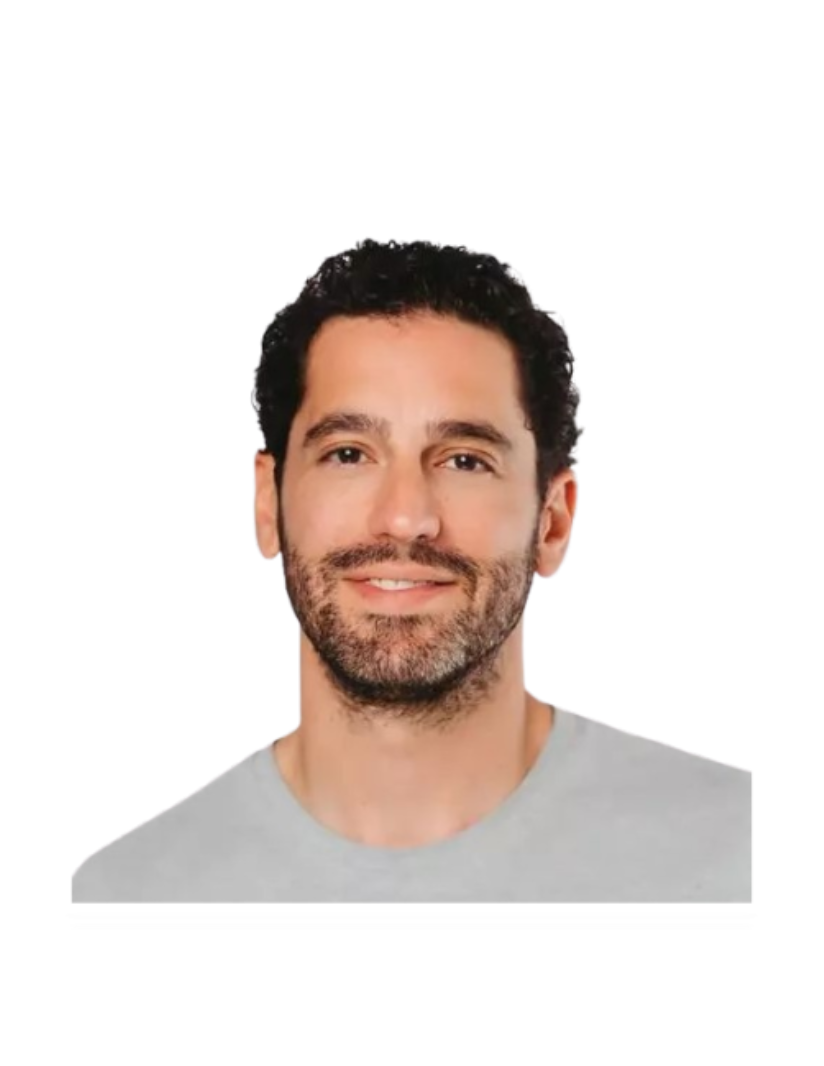
Episode 4
Rob Khazzam, CEO at Float on Building a Culture of Urgency, Customer Obsession, and Risk Tolerance
Rob Khazzam
Co-Founder and CEO at Float
-

Episode 3
Mark Frein, COO at Oyster on Being a Multifunctional Executive and Harnessing Pattern Recognition in Leadership Roles
Mark Frein
COO at Oyster
-
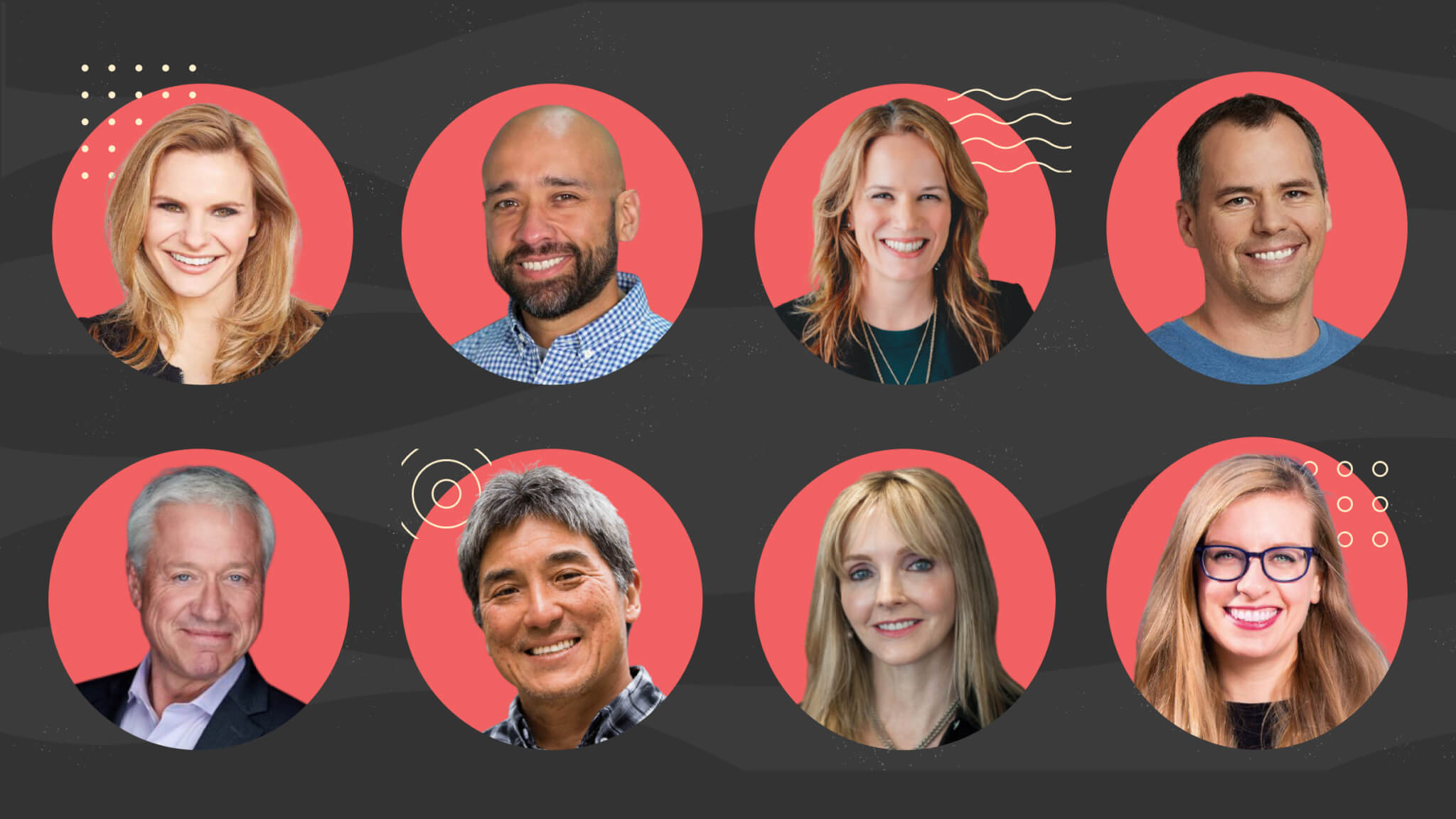
Episode 1
Top 10 Leadership Lessons From the Supermanagers Podcast
-
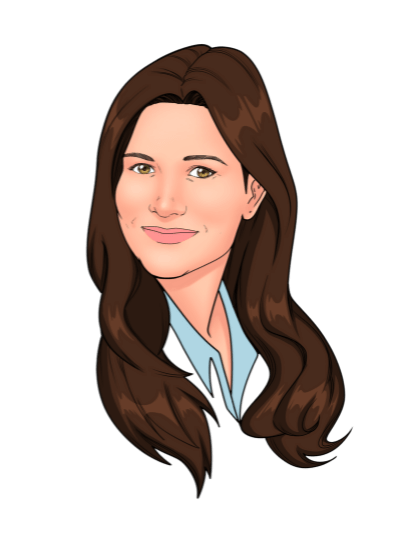
Episode 80
Are You a Micromanager or a Coach? Why Leaders Should Avoid Giving Advice and What To Do Instead
Dr. Julia Milner
Leadership Professor at EDHEC Business School
-
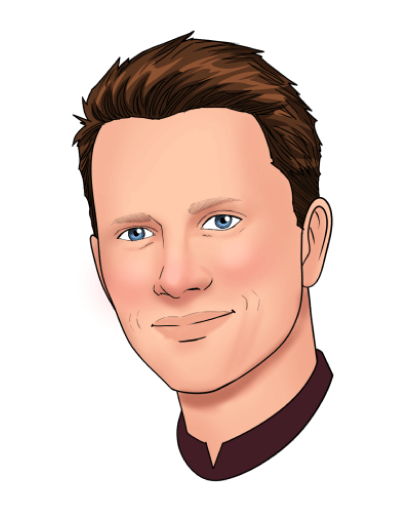
Episode 10
Empowering Your Team to Lead Fulfilling Lives
Vlad Magdalin
CEO AT WEBFLOW
-
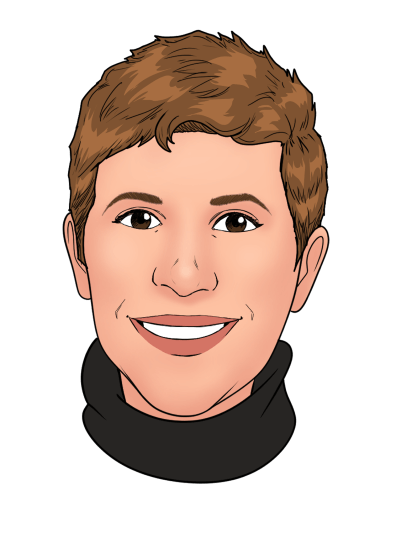
Episode 33
Balancing Challenge and Care at Work: The Radical Candor Approach
Amy Sandler
Chief Content Officer at Radical Candor
-
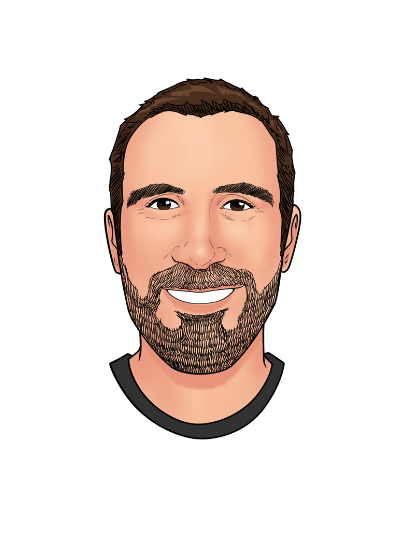
Episode 87
You Won’t Have All the Answers: Why Being Intellectually Honest and Disassociating from Ideas Makes You a Better Lead
Rémi Guyot
Chief Product Officer at BlaBlaCar